
This will be my hearing system. Information from the Cochlear UK website.
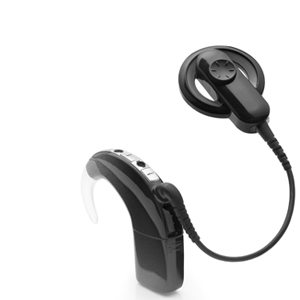 | |
Nucleus® 6 Sound Processor
|
The CP910 and CP920 sound processors are both built from tough
materials to withstand the most active lifestyles. The CP920 is not only
stylish, it is also the most compact on the market. Alternatively, if
you want to use plug in accessories, you can choose the CP910. Both
processors will be able to work with a future range of wireless audio
accessories.
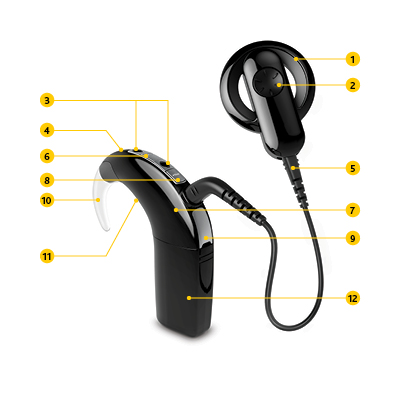 |
CP910 Sound Processor with standard rechargeable battery module |
| 1. Coil |
| 2. Coil magnet |
| 3. Microphones and microphone protectors |
| 4. Indicator light |
| 5. Coil cable |
| 6. Upper button |
| 7. CP910 processing unit |
| 8. Lower button |
| 9. Accessory socket |
| 10. Earhook |
| 11. Serial number |
| 12. Standard rechargeable battery module |
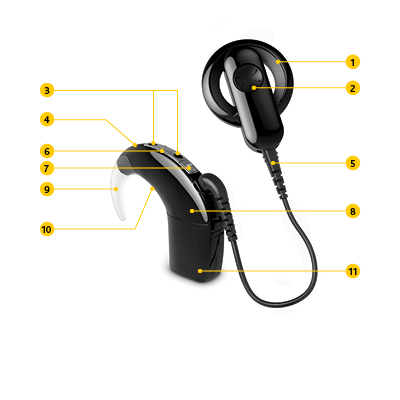 |
CP920 Sound Processor with compact rechargeable battery module |
1. Coil |
| 2. Coil magnet |
| 3. Microphones and microphone protectors |
| 4. Indicator light |
| 5. Coil cable |
| 6. Upper button |
| 7. Lower button |
| 8. CP920 processing unit |
| 9. Earhook |
| 10. Serial number |
| 11. Compact rechargeable battery module |
Unique to Nucleus 6, the CP910 and CP920 sound processors contain a Cochlear-developed chip that is five times more powerful that the chip in our Nucleus 5 System, enabling a range of automated sound technologies (SmartSound iQ) and wireless capabilities that let you take advantage of a future range of wireless accessories.
In addition, if at the time of choosing an implantable hearing solution, you still have some limited hearing, both the CP910 and CP920 sound processors can have the earhook easily changed to accomodate the acousting hearing aid component to enable the 'hybrid' capability unique to the Nucleus 6 System.
How it Works
Unlike hearing aids, which simply amplify
sound at the outer ear, a cochlear implant system bypasses the parts of
your ear that no longer work properly, delivering sound in the form of
electrical signals via the hearing nerve to the brain.
Sound can be categorised into two types –
Cochlear’s range of implants is carefully designed to preserve as much as possible of any hearing you may have left. If you do have any residual hearing, this can be maximised by adding on the acoustic component of our Nucleus 6 system. This gives you the benefit of boosting your remaining hearing and combining it with your newly augmented hearing. Only Nucleus 6 can offer you this option.
Sound can be categorised into two types –
- low frequency - providing the foundation and structure of sound like vowel sounds and the melody of speech – these are important for voice recognition and detecting emotion
- high frequency – providing the additional vital details of sound, helping you identify and differentiate words and improving quality and clarity – these are important for speech understanding, particularly in noisy situations.
Cochlear’s range of implants is carefully designed to preserve as much as possible of any hearing you may have left. If you do have any residual hearing, this can be maximised by adding on the acoustic component of our Nucleus 6 system. This gives you the benefit of boosting your remaining hearing and combining it with your newly augmented hearing. Only Nucleus 6 can offer you this option.
How normal hearing works
- Sound waves enter the ear and travel along the ear canal to the ear drum.
- Movement of the eardrum makes tiny bones in the middle part of the ear vibrate.
- These vibrations are transmitted to a fluid filled part of the inner ear, known as the cochlea.
- Tiny hairs lining the cochlea pick up this movement and send electrical signals to the brain, where they’re interpreted as sound.
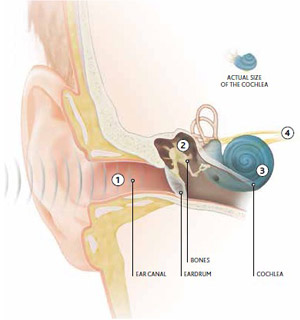
Hearing with a cochlear implant
- Microphones on the sound processor pick up sounds and the processor converts them into digital information.
- This information is transferred through the coil to the implant just under the skin.
- The implant sends electrical signals down the electrode into the cochlea.
- The hearing nerve fibres in the cochlea pick up the signals and send them to the brain, giving the sensation of sound.
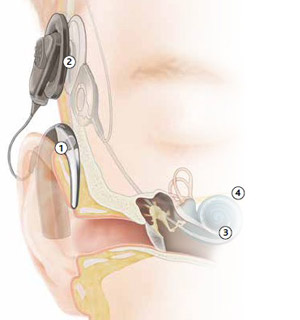
How the acoustic component works
- The acoustic component, like a hearing aid, amplifies these sounds and sends them via the normal hearing pathway.
- At the same time, the processor converts high frequency sounds to digital information which is sent to the implant under the skin.
- The implant sends electrical signals down the electrode into the cochlea, stimulating the nerve fibres.
- This nerve response is sent to the brain, where it is combined with the response from the amplified sounds from the acoustic component into a perceived sound.
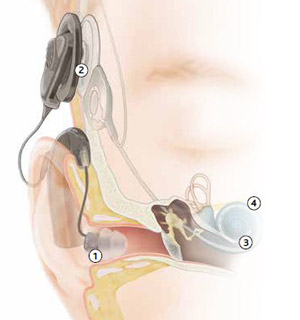

Perhaps you've thought about getting a hearing aid, but you're worried about where you will get the best, then think no further just visit our site. Here you will get the best hearing aids that you desired. Hearing aid centers Nassau County
ReplyDelete